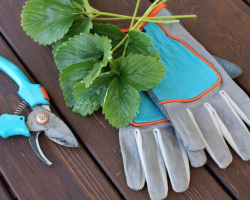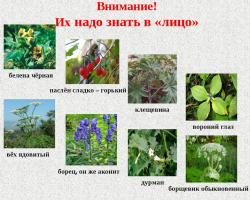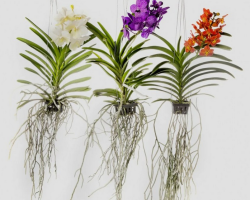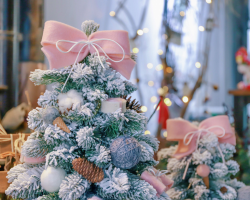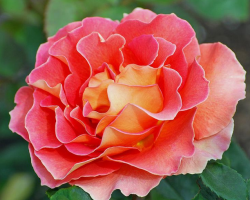Content
- Description of the plant of lavender
- Varieties and varieties of lavender plants used in landscape design: List
- The choice of a place for Lavender Sadovaya when landing in the country
- The choice of lavender plants
- Methods and conditions for landing lavender in open ground
- Lavender planting seeds for seedlings: instructions, photos, videos
- Video: growing lavender seedlings from seeds
- Laante's flowers planting with seedlings in the ground: terms, instructions, video
- Video: Laante's planting rules in open ground. Lavender field
- Lavender care from the moment of landing in open ground: Rules
- Lavender fertilizer and top dressing
- Lavender trimming - how to do it right: terms, tips, video
- Video: Lavender. Proper pruning for chic flowering.
- Wintering Lavender: tips
- Propagation of lavender flowers: seeds, seedlings, rhizomes
- Lavender planting in the fall: Features
- Features of growing lavender in different regions: in the middle lane, suburbs, Leningrad region, in the Urals, in Siberia, Belarus
- Where to buy seeds, decorative lavender seedlings for planting?
- Video: Lavender will rise with a brush! Sowing lavender without diving
Read on our website another article about lavender, cinnamon, lemon and 10 more aromatic miles that will change your life. This is interesting and useful information.
This article describes what varieties of this plant exist, how to plant it, fertilize and feed it, as well as a lot of other useful information. Read further.
Description of the plant of lavender

- The bush is rounded, compact.
- The stems are straight, long, covered with a short pile.
- The leaves are narrow, long, with a silver tint.
- The root system of the plant is powerful, branched.
- Small fragrant flowers are collected in ears 6-10 pieces In the inflorescence. In natural conditions, they have a blue and dense-violet hue. Artificially bred varieties are distinguished by a wide variety of colors.
Lavender is an excellent honey plant, attractive for bees and butterflies.
Varieties and varieties of lavender plants used in landscape design: List

- A common, unpretentious, frost -resistant appearance. In temperate latitudes, it needs to be covered in the winter period.
- A spherical bush does not have a main stem, grows to 1m in height.
- The roots are branched, located close to the surface of the soil. The shoots are covered with a pile of a grayish shade.
- The leaves are narrow, long, bright green, with pointed edges.
- Flowering continues from June to September. Small flowers have a lilac, purple, purple hue.
- Varieties of English lavender are bred, which grow well in the regions with cold summer and winter, as well as varieties with white and bright blue peduncles.

Lavender broad -leaved (French):
- It looks more magnificent than English, but much sensitive to cold.
- The height of the bush reaches 1.5 m. The plant is distinguished by wide leaves, original colors with “wings” and a variety of shades - from cream to purple.
- It blooms from April to June, its feature is a strong, but unpleasant smell.

Lavender hybrid (Dutch):
- The highest appearance grows up to 2 m in height.
- This is a hybrid plant of English and French lavender.
- It has wider leaflets than a narrow -leaved look, less resistant to a decrease in T °.
- Blooms in June. It is grown mainly for industrial purposes.

Tough lavender:
- The most sensitive to lower T ° variety.
- The height of the bush no more than 1 m.
- The leaves are soft, silver, oblong, to 4 cm in length, with a characteristic gear edge.
- Large inflorescences are rich in all shades of purple.

Lavender is long -lasting:
- It is grown as an annual.
- The bush is neat, high 40-60 cm.
- The leaves are carved, like a fern, gray-green.
- Blue-violet flowers bloom after 1.5 months. After the emergence of seedlings.
- The plant blooms abundantly and long - until November.

Lavender cherries:
- A little -known, but deserving view.
- The height of the rounded bush up to 50 cm. The shoots are covered with gray pubescence.
- The leaves are narrow, fragrant, densely covering the stems.
- The flowers are large, bright purple shade.
Below even more interesting and useful information. Read further.
The choice of a place for Lavender Sadovaya when landing in the country
- This plant is photophilous, loves open land. The brighter the lighting, the more magnificent flowering and the aroma is better. Young bushes should be shaded from scorching rays.
- Lavender grows well on light, air soils. Flowers need good watering without stagnation. The place for planting should be provided with high -quality drainage.
- In the country for landing, there should be enough space for lush bushes.
- Do not plant lavender under the windows of the house. The honey plant attracts bees, a strong aroma can cause an allergic reaction and headache.
It is also important to choose the right variety of plants. Read further.
The choice of lavender plants
- The seedling, grown independently, should have healthy, strong roots.
- Shoots should not be elongated from a lack of lighting.
- The acquired copy must be carefully checked for the presence of signs of the disease and insect damage. All damaged must be removed immediately.
- If the seedling is purchased during flowering, all the peduncles should be removed from him. This contributes to a faster rooting.
Usually in garden markets and in special departments of supermarkets, they sell a narrow -leaved lavender. It tolerates the winter perfectly, is less subjected to the invasion of insects and almost does not get sick of different pathologies.
Methods and conditions for landing lavender in open ground
Seeds:
This is a long but cheapest method. Plants grown from seeds have good immunity. An important condition is the stratification of seeds before planting. This is the process of withstanding seeds in the cold, which positively affects the rate of germination. Stratification can be:
- Artificial. With this type of stratification, the seeds interfere with wet sand, transferred to the container and left in the refrigerator at 1.5-2 months. From these seeds, seedlings are grown or immediately planted in open ground in the spring.
- Natural. Seeds of flowers are sown in open ground in the autumn. This method is suitable only for areas with warm winter and summer. In the middle strip, seeds in the ground often freeze. They are planted to the depth 4 mm. The soil is compacted and watered, if necessary. In winter, make sure that the landing site is closed by snow.
Cuttings:
- Planting material is prepared in advance.
- From annual shoots, cuttings are cut 8-10 cm long, placed in the ground and covered with a greenhouse on top. The roots appear in a few weeks.
- After that, seedlings are transplanted to a permanent place.
Layering:
- The lower escape of the bush is bent to the surface of the earth, fixed and sprinkled with earth.
- With regular watering, during 2 months. In the place of contact with the ground, additional roots appear at the shoot.
- After that, it is separated from the bush and put in a permanent place.
When planting a seedling in open ground, the following conditions should be observed:
- Planting is carried out only when the threat of frost passes.
- The place for landing should be prepared in advance, the earth is carefully dug with the introduction of peat, compost and ash.
- To develop young roots, it is necessary to cut the roots of the seedling slightly.
- The root neck of the bush when planting should be buried in the soil by several centimeters.
Seedlings can be grown from seeds. You can start this in February-March in order to already plant seedlings in the ground in the spring. Read more about how to do this.
Lavender planting seeds for seedlings: instructions, photos, videos

To do this, mix:
- 3 parts of garden land
- 2 parts of humus
- 1 part of the sand
Any soil before use is disinfected by steaming and spilled with fungicides. Any containers are suitable for seedlings:
- Boxes
- Pots
- Cups
Here are the instructions for planting lavender seeds for seedlings:

- Choose a container with drainage holes. If there are no holes, you need to do them yourself.
- Fill in the bottom 1.5 cm drainage material (perlite, expanded clay).
- Fill the container with prepared soil, leaving to the edge 2-3 cm.
- Using a spray gun, spill a soil filler with water T °-23-25 \u200b\u200b° C.
- Lay the landing material on the land at a distance about 2 cm.
- Sprinkle the seeds on top with a small amount of earth or sand.
- Slightly moisturize the soil again from the spray gun.
- Cover the bowls with a film or glass.
- Put in heat.

The best conditions for the rapid germination of seeds:
- Temperature from 15 to 22 degrees
- Good lighting
- Watering with warm water without filling
- Regular ventilation of crops
Advice: After airing out, do more often, then remove the film or glass.
To prevent stretching the stems, ensure additional lighting. When the shoots are getting stronger, dive and transplant plant 5 cm From each other.
Watch the video how you can grow lavender from the seeds. It is simple, and even if you are a novice gardener, you can easily cope with it.
Video: growing lavender seedlings from seeds
Laante's flowers planting with seedlings in the ground: terms, instructions, video

Here are the instructions for planting lavender flowers with seedlings in the ground:
- Prepare the holes for planting. They should be wide, the depth is equal to the length of the roots of the seedling.
- Remove the seedling seedling, inspect the roots, cut the roots approximately 2 cm.
- The transshipment method, along with the lump of the earth, place the plant in the hole.
- Pour the earth so that the root neck is no more than 5 cm.
- Seal the soil around the shoot. The bush should be in a small hole.
- Clean the seedling under the root abundantly.
Ready. It remains only to not forget to water and wait for beautiful flowering. The following describes how to properly care for this culture so that it grows healthy and beautiful.
Watch the video how experienced gardeners plant plants in the ground.
Video: Laante's planting rules in open ground. Lavender field
Lavender care from the moment of landing in open ground: Rules
WATERING:
- The plant does not stand the stagnation of moisture, water the bush should be watered as the soil has dry.
- In the summer, watering should be increased, water should come under the root.
HILLING:
- To quickly grow new shoots, the bush needs to be spent.
- This is especially true for old plants.
- Perform enlightenment in spring and autumn.
Loosening of the soil:
- Lavender grows poorly on dense, tamped soil. The roots need air.
- Regular loosening of soil under the bushes, especially after watering, is a prerequisite for a good plant growth.
WEEDING:
- Weeds can “drown out” a young plant, weeding should be carried out regularly.
- For more effective getting rid of weeds, pour the soil under the bushes with peat, wood chips.
- Mulching will help to maintain the so loose so loose and prevent its drying out.
Fertilizer application:
- Nitrogen, on which the growth and development of the plant depends on the spring time.
- Potassium-phosphorus is used before flowering.
- Feed lavender flowers 2-3 p. per season.
- Many gardeners use compost, which are brought into the soil in the spring.
Protection against floral pathologies and pests:
- Lavender culture is rarely attacked by insects and is not subject to disease.
- The reason for the development of pathological processes of the plant can only be incorrect care.
- Due to stagnation, a gray rot appears in the roots of water. In this case, the watering mode should be changed and the culture is processed with fungicides.
- Collect malicious insects that appear, remove the sick leaves from the plant.
Pruning:
- It is needed for the formation of beautiful, lush bushes, to rejuvenate culture.
Let's take a closer look at the main rules of care, without the correct conduct of which, flowers can even die. Read further.
Lavender fertilizer and top dressing
- Urea solution - 1 table. a spoon of 10 liters of water.
- Humat sodium - 2 table. tablespoons for 10 liters of water. 5 liters of such a r-raver are enough on the bush.
Complex potassium-phosphorus fertilizers are brought into the ground before flowering, they need to be diluted in accordance with the instructions.
It is worth knowing: Potassium provides luxurious and long flowering.
If the earth is mulched by peat or compost, nitrogen fertilizers can be completely excluded. The nutrients from compost will be enough for the plant for the whole season.
Lavender trimming - how to do it right: terms, tips, video

You can cut the lavender seedlings twice a year to choose from - in the spring, summer or autumn. How to do this right? Here are the tips:
- Spring pruning Perform in March or early April, when it is already warm and sunny. There should be more hot days than cold. Remove damaged shoots, too elongated and broken branches. Cut the rest of the stems so that there is no emptiness inside the bush.
- Summer pruning Performed in July-September. At this time, fading inflorescences are removed, which prepares a culture for repeated flowering.
- Autumn pruning can replace the first. Immediately after flowering, at the end of August, the flowers, along with part of the stem, are cut 7 cm. Autumn trimming prepares the plant for winter cold, makes it more durable.
Features of lavender trimming:
- For the first year, remove the young shoots half, this contributes to the growth of new stems, the formation of a lush, dense bush.
- Regular pruning helps to protect the plant from damage in winter when the bush is under the snow.
- It is forbidden to cut the lavender excessively, random removal of growth kidneys can lead to the death of the bush.
- Form the lavender bush in the form of a ball. This helps to provide air access and uniform shooting of shoots.
- Once at 4-5 years old can be rejuvenated and trimmed by removing all the branches 1/3 of the length.
How to do the pruning, look more and clearly in the video:
Video: Lavender. Proper pruning for chic flowering.
Wintering Lavender: tips
The most resistant to the cold is narrow -leaved lavender. In the region with a warm climate, she does not need shelter for the winter. If the temperature in winter drops to -25 ° C., the bush should be prepared for harsh conditions:
- Abundantly muffle the soil around the plant
- Tie the branches so that snow does not get inside the bush
- Cover on top with a spruce or pine spruce
It is worth noting: French lavender requires a more thorough shelter. The plant is hilled, wrapped with straw, additionally covered with a thick layer of spruce and brushwood on top.
A few more tips:
- It is not necessary to fertilize the lavender culture for the winter, the mulching layer is enough.
- Seedlings must be protected from the winds so that the winter shelter does not collapse.
- Pruning lavender for the winter is not required. The sprawling bush is better than the snow. But under the influence of heavy masses of snow and wind, long branches can break and freeze. Each gardener himself decides on autumn pruning.
If you do everything right, then your lavender "field" will be well overwhelmed.
Propagation of lavender flowers: seeds, seedlings, rhizomes
- Seed landing - The longest method
Seeds are bought or collected from adult bushes in August, after flowering. Sow in the autumn in open ground or left for seedlings, which is planted in the spring. The lavender grown from seeds will bloom only in the second year.
- Cherging
Cuttings are cut from strong young shoots, rooted in nutritional soil and planted in a permanent place.
- Division of the bush - The method is unsafe for the plant
An adult bush is dug up and neatly divide into several parts from 5-6 stems With roots. Each separated part together with the ground is placed in a wide hole, covered with soil, rammed and watered abundantly.
- Layering - The easiest and most effective way to propagate a rhizome or seedling
The strong escape is bend to the ground, fixed and fall asleep on top with soil. You can bend the top of the escape by directing it up. When the roots appear, the seedling is neatly separated and transplanted to a permanent place.
Lavender planting in the fall: Features
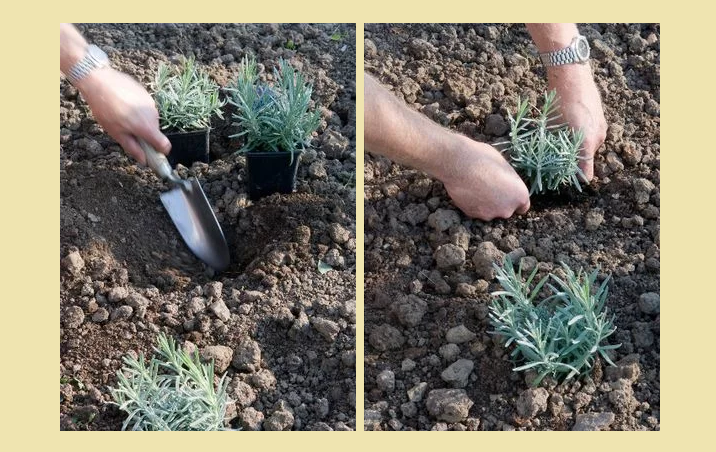
To plant lavender seedlings in the winter is better in areas with a warm climate. In the fall, you can sow the crop in open ground, provided that they will be covered with a layer of fallen leaves and snow. Here are the features of this process:
- The bush, divided into parts, can also be determined in a permanent place in the fall, before constant frosts.
- The main condition of planting - the plant should have strong roots.
- Separate parts of the bush are planted, necessarily high and carefully covered.
- If the lavender culture will suffer well, in the spring, the friendly growth of young shoots is provided.
Seedlings obtained from cuttings and layering are better to put in prepared containers and keep at home in the warmth. In the spring, well -rooted and overwhelming plants are transplanted into open ground.
Features of growing lavender in different regions: in the middle lane, suburbs, Leningrad region, in the Urals, in Siberia, Belarus
The middle strip of Russia, in the Moscow Region and the Leningrad Region:
- In these areas, cold -resistant varieties of English lavender culture are grown.
- Basically, growing is carried out with seedlings, the seeds are not sown in open ground.
- The seedlings grown from seedlings are more hardy, it is better to tolerate the temperature difference, more resistant to pathologies.
- The poor, acidic soils of the region require improvement by making peat, humus, ash.
- In the lowlands of the Leningrad region, moisture stagnates, for lavender, gardeners create artificial hills.
- In autumn, the bushes are cut and covered with spruce branches so that the air freely penetrates the shelter. In soft winters with high humidity, a dense shelter of the bush can lead to rotting of the roots.
Ural:
- The Southern Urals with its soft climate is suitable for growing even varieties of French lavender.
- In the northern regions, only frost -resistant species can grow.
- Sowing material is necessarily undergoing stratification, seedlings in the ground are planted no earlier than June.
- For better growth and flowering of lavender culture in the northern sun, additional top dressing with nitrogen and potassium fertilizers is required.
- Be sure to carry out spring and autumn circumcision of bushes. In the winter, the soil is well mulched, seedlings are covered with spruce branches.
Siberia:
- In such a region, the lavender culture of frost -resistant varieties is raised. Any planting material is hardened.
- In the winter, plants are carefully wrapped in burlap, covered with spruce and brushwood.
- Autumn cutting of twigs is not carried out so that the plant has additional protection against frosts.
Belarus:
- In this country, warm, sunny summer, but severe winters.
- In the southern regions of Lavender, it can bloom twice in the summer.
- In the winter, the bushes require a thorough shelter. Seeds are stratified.
- In Belarus, light soils, so for good growth of lavender no additional top dressing is required.
In the south of Russia, you can plant French and gear lavender. They are not very whimsical in leaving and grow perfectly in a warm climate.
Where to buy seeds, decorative lavender seedlings for planting?
It is better to buy lavender seeds in specialized stores. Be sure to pay attention to the expiration date and integrity of the packaging. Decorative seedlings for planting purchase plants, agricultural films, in open market platforms. When buying, you should remember:
- Each plant should have a tag with the name of the variety, manufacturer, quality standard.
- At the first request of the buyer, the seller is obliged to provide a certificate of quality and variety of plants.
- The sale of plants affected by diseases and pests is not allowed.
Lavender is a beautiful southern plant. With a responsible approach to the choice of planting material, proper care, it will delight the gardener with abundant flowering and unique aroma in any climate. Good luck!
Do you have a lavender or are you just going to plant it?
Video: Lavender will rise with a brush! Sowing lavender without diving
Read on the topic:


